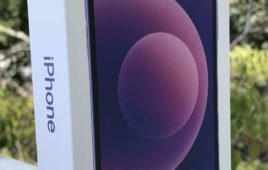The
news was good for stakeholders in TD-LTE: China Mobile, the world’s largest
wireless operator by subscriber base, said at Mobile World Congress last month
that it would begin large-scale trials of the technology.
With
an operator the size of China Mobile set to deploy 200,000 TD-LTE base stations
between now and 2013 – more than are believed to be used in the average U.S.
network – the technology seemed well-positioned to getting the scale it needed
to become a global success.
But
less than two weeks later, reports emerged that the Chinese government would
likely delay granting TD-LTE licenses for two to three years. It’s not official
yet – the government hasn’t put out a formal policy statement – but it’s
definitely not a positive sign for China Mobile’s mobile broadband plans.
So
with its most high-profile backer sent back to the bench, does that mean TD-LTE
is out of the running? Not by a long shot.
The
technology is being adopted worldwide by operators with unpaired spectrum
looking to get in on the growing LTE ecosystem. The overlap between the
time-division and frequency-division flavors is about 90 percent, making them
nearly indistinguishable.
Clearwire
is set to deploy its first 5,000 TD-LTE base stations by mid-2013 for its
overlay network; DirecTV subsidiary Sky
Brazil lit up its service late last year; and Bharti Airtel and Reliance
Industries Limited plan to light up their respective networks this year in the
high-growth, critically important Indian market. The standard has also made
inroads in a number of other markets including Australia, Japan, Malaysia,
Sweden and the Middle East.
“What’s
really important here is the operators with unpaired spectrum can now enjoy
some of the economy of scale advantages that come from FDD technologies,”
Yankee Group analyst Ken Rehbehn says.
Even
with China Mobile’s fate uncertain, TD-LTE is gaining steam. Operators whose
unpaired spectrum formerly limited them to WiMAX have found a way to latch on
to LTE’s rapid rise.
So
set aside the bad news about China Mobile and focus on the positive: TD-LTE is
ready for takeoff, and 2012 could be the year that it happens.
The Clearwire
Factor
Clearwire
has long been at the forefront of TD-LTE development, even if it will be far
from the first to deploy when its network goes live next year.
It
founded the Global TD-LTE Initiative with China Mobile, Vodafone, Softbank and
Bharti Airel last year and also began working with China Mobile on devices,
interoperability testing and roaming.
“If
you look at volumes of scale, I’d rather hitch my bandwagon on these guys and
have a globally harmonized spectrum solution than not,” says Clearwire
Chief Technology Officer John Saw, citing GTI estimates that TD-LTE will cover
2 billion people by 2014. “The scale is tremendous.”
China
Mobile’s trial run at the Shanghai Expo and its partnership with Clearwire
helped legitimize TD-LTE, bringing on board top-tier vendors like Qualcomm and
Alcatel-Lucent.
“What
we have shown is TDD can scale. It will be as formidable as FDD in terms of LTE
services,” Saw says. “We’re giving a level of comfort to carriers
around the world – it’s not to be underestimated and the ecosystem is growing
by leaps and bounds.”
But
for all of Clearwire’s work to establish commonalities in the ecosystem, its
network architecture will be very different from the majority of other
operators’ deployments.
Instead
of the broad, even coverage that typifies most networks, Clearwire is using its
limited financial resources to deploy TD-LTE on only its most high-traffic cell
sites. About half of its sites carry a disproportionate 80-90 percent of
traffic, CFO Hope Cochran said at a recent investor conference.
The
result: Clearwire’s new network will function as the LTE equivalent of Wi-Fi
offload, alleviating congestion where it’s needed most for wholesale customers
Sprint and Cricket Communications. The
network will also be LTE-Advanced-ready, capable of supporting carrier
aggregation technology once it’s standardized.
Carrier
aggregation will take LTE where it’s never gone before, Saw says. The technique
combines different spectrum bands into a single, wider channel, increasing the
network’s capacity.
“Other
carriers look at carrier aggregation as a way to stop the spectrum crunch…
Clearwire is looking at carrier aggregation to set a pace that no one will be
able to follow – I’m talking about combining a 20 MHz channel with another 20
MHz channel to create a 40 MHz pipe,” he says. “That is essentially
stringing a virtual fiber with you wherever you go at a reasonable cost.”
Clearwire’s
goal is to make its pipe as fat as possible. Sprint – its first TD-LTE
wholesale customer – has a somewhat different goal.
Bob
Azzi, senior vice president of networks at Sprint, says it plans to use that
pipe to give its subscribers a “consistent experience,” not
unexpected boosts in speed. The added capacity will be used to even out speeds
during times of congestion, when data rates would normally slow.
“When
we combine Clearwire’s network with ours at heavy traffic sites, theoretically
customers would be at a faster peak speed, but we’re offloading that traffic at
times of congestion in our base network, so the customer experience is going to
look very consistent in terms of the average rates,” Azzi says.
The
first Sprint smartphones to run on both its network and Clearwire’s TD-LTE
service are expected to hit shelves some time next year.
Vendor
Perspective: The Attitude Shift
Sequans
was asked by China Mobile back in 2009 to develop chips for its TD-LTE trial
network at the Shanghai Expo. As Sequans marketing executive Craig Miller puts
it, “What are you going to do, say no to the world’s largest
operator?”
The
company had a long history with WiMAX, which is also a TDD technology, and had
sample TD-LTE chipsets available for China Mobile in a matter of months. China
Mobile’s TD-LTE evangelizing “legitimized” the use of unpaired
spectrum for time-division-duplex-based wireless service, Miller says.
“Most
of the traditional providers of cellular technology have been what I call ‘FDD
bigots’ – they’ve been very anti-TDD for years, and for good reason,”
Miller says.
It’s
easy to understand why providers with a long history in voice-centric network
design favor FDD. Early wireless networks were built for voice, so
frequency-division-duplex was ideal because it is symmetric and allows signals
to be sent and received at the same time – a good fit when you’re talking about
as much as you’re listening.
But
that model no longer applied as the industry moved to more data-centric
services. Time-division duplexing allows providers to adjust the
uplink/downlink ratio, lending itself more flexibly to download-heavy data
traffic.
The
unpaired spectrum that was once a forgotten set of bands is now being put to
use for TD-LTE, helping to change longstanding attitudes of time-division
duplexing.
“Now
I think people see a lot of value in having TDD spectrum for some of these
high-capacity, high-speed networks a lot of countries will need,” Miller
says. As an added benefit, the spectrum is abundant in many markets – Clearwire
has about 160 MHz of 2.5 GHz spectrum across the country’s top 100 markets.
Bill
Clifford, vice president of Alcatel-Lucent’s LTE product line, agrees with
Miller’s characterization of the industry’s change in attitude. “There has
been industry bias toward the usefulness of TDD spectrum, at least in the old
days,” Clifford says. “With this adoption of TD-LTE, I definitely
don’t see that bias any more.”
Like
Sequans, Alcatel-Lucent was a participant in the Shanghai Expo demo. Years
after the influential trial, Clifford is bullish on the standard’s prospects.
“There’s
a significant amount of spectrum that is TDD only. Spectrum, as we all know, is
a highly valuable item and it’s not going to sit fallow for long,” he
says. “WiMAX is fading away, and the natural technology to take over is
TD-LTE. It’s a boom, it’s happening, it’s for real.”
Qualcomm
technical marketing director Rasmus Hellberg agrees – but thinks it might be
time to stop thinking separately about TD-LTE and FDD-LTE.
“It’s
not two ecosystems, it’s one ecosystem – it just has two flavors,” he says.
Qualcomm has taken that to heart, incorporating both technologies in its LTE
chips.
Maravedis
estimates that 31 operators had committed to launching TD-LTE by the end of
last year. The firm predicts that by 2016, about one-quarter of the world’s
estimated 469 million LTE subscribers will use the time-division version of the
technology.
So
with China Mobile and its 650 million wireless subscribers on board, could
TD-LTE eventually outpace FDD-LTE? Rehbehn isn’t ready to go that far, calling
the standard a “sleeping giant.” If the technology maintains its current
trajectory, that giant just might wake up.




